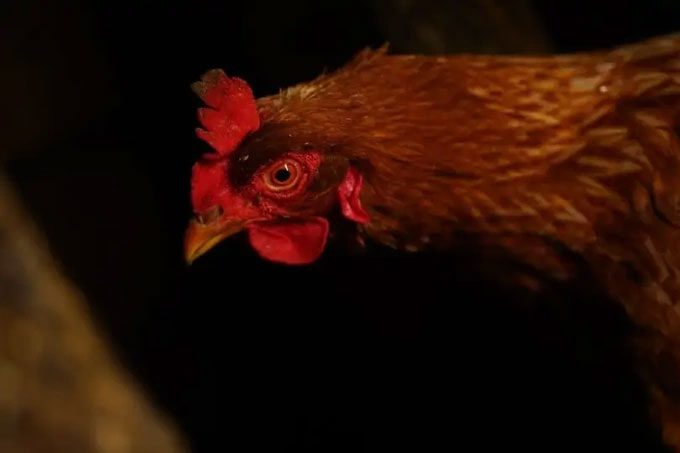Vision is the most developed sense in chickens. This is because chicken eyes are designed to see clearly fast-moving objects, especially when they are moving in open spaces, but their vision in the dark is extremely poor.
Most vertebrates or mammals have retinas that contain cone photoreceptor cells (responsible for daytime vision) and rod photoreceptor cells (which assist with nighttime vision).
In humans, cone cells make up about 5% of the total photoreceptor cells, while in mice, this percentage is around 3%, and birds, including chickens, have a higher number of cone cells compared to rod cells.

The chicken’s retina contains photoreceptor cells similar to those of humans and other animals, responsible for daytime and nighttime vision. (Illustration: Petkeen).
Therefore, chickens cannot see well in the dark, as they do not have enough rod photoreceptor cells.
The ratio of cone cells to rod cells in chickens is 3:2, while in humans, the ratio is 1:20. This is why we can see better than chickens at night.
Scientists believe that the ancestors of mammals developed an advanced visual system but lost some photoreceptors during the course of evolution. This likely occurred during their nocturnal phase.
The nocturnal lifestyle of these animals hindered the development of color recognition and vision, ultimately leading to the loss of some cone photoreceptors.
In contrast, birds (the ancestors of chickens) evolved in the opposite direction, as they do not have a nocturnal lifestyle, and thus lost some rod photoreceptors (responsible for nighttime vision) during evolution.
Can chickens see colors?
Chickens have four types of cone cells in their retinas instead of the three types found in human eyes. Thus, chickens can also see different colors.
Notably, chickens have a type of cone cell that is sensitive to ultraviolet (UV) light, which helps them distinguish even more colors.
A hen can use this photoreception to identify which chicks are healthy based on their feathers reflecting ultraviolet light, allowing them to recognize which chick is weaker and prioritize care.
An interesting fact is that if you have ever observed chickens walking, you may notice that their heads bob along with their movements, similar to a pendulum.
In fact, to see clearly while moving, chickens must keep their heads as still as possible for as long as they can. This head-bobbing rhythm is called the optokinetic reflex, which helps them navigate their environment more effectively.


















































